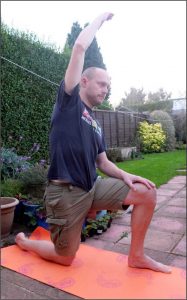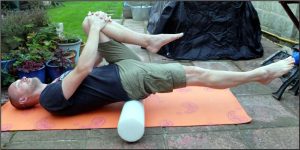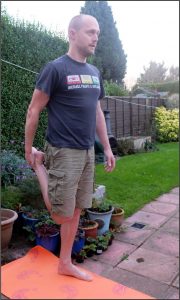The Hip Flexors:
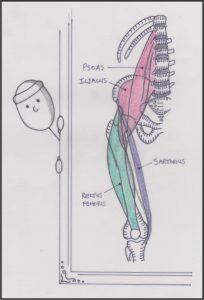
Finally its blog time again and this time I’ve decided to concentrate my research on the hip flexor muscle group. This includes Rectus femoris – one of the quadricep group – the Psoas/Iliacus and Sartorius muscles.
I’ve decided to pursue these muscles as I feel many of you out there need some assistance in both finding these muscles and learning how to stretch and strengthen them for more effective movement and use.
Generally , we are a much more sedentary population, we drive a lot, sit a lot, and if we do exercise it can be pretty quadricep heavy. All of these activities as well as postural structures contribute to hypertonic hip flexors – that is hip flexors that are very tight. The tightness of these muscles can have a huge impact on the back and subsequently knees, ankles and feet. Also not forgetting the upper body chain.
In terms of starting to release these muscles it is very much a case of trial and error. We are so beautifully unique that what works for one, may not work for another! [Please note, if any of you are worried about more than alignment or if you have had previous trauma, do consult a physiotherapist or osteopath to confirm and diagnose your current predicament. Sometimes we need more than self diagnosis!]
So let’s start with the function of the hip flexor muscle group – how do we use these muscles? Quite simply, whenever you lift a leg – either with an extended or bent knee. Just think how many times you do this during everyday activities, not including specific exercise. Walking up stairs; getting in and out of a car; climbing a ladder; doing ‘the running man’…It’s a huge amount!
I really want to keep things simple, so here are a few basic exercises which may be helpful if you are experiencing tightness or discomfort in the movement mentioned above. I am using Pilates based movements but there are oodles of other exercises!
- 90/90 Kneeling hip flexor stretch: Keep your bottom pushed under; Reach and stretch up and over towards the side of the bent knee; Switch knees and repeat.
- Lay with your lower back resting on a support; Bring one knee up to your chest; Allow your other leg to stretch away from you. Switch legs and repeat.
- In a standing pose, hold onto your foot and bring it up to your bottom; Keep knee and hip in line, and bottom pushed under. Switch and repeat with other leg.
The Effects of Posture:
Your posture can also have an effect on the hip flexor muscle group, by pulling your pelvis and spine out of alignment. So, have a think about your posture type – which of the diagrams below relate to your posture? How does your work and exercise regime affect your posture? Try and focus on creating a more neutral alignment for your posture so the muscles are less strained as you continue with your day.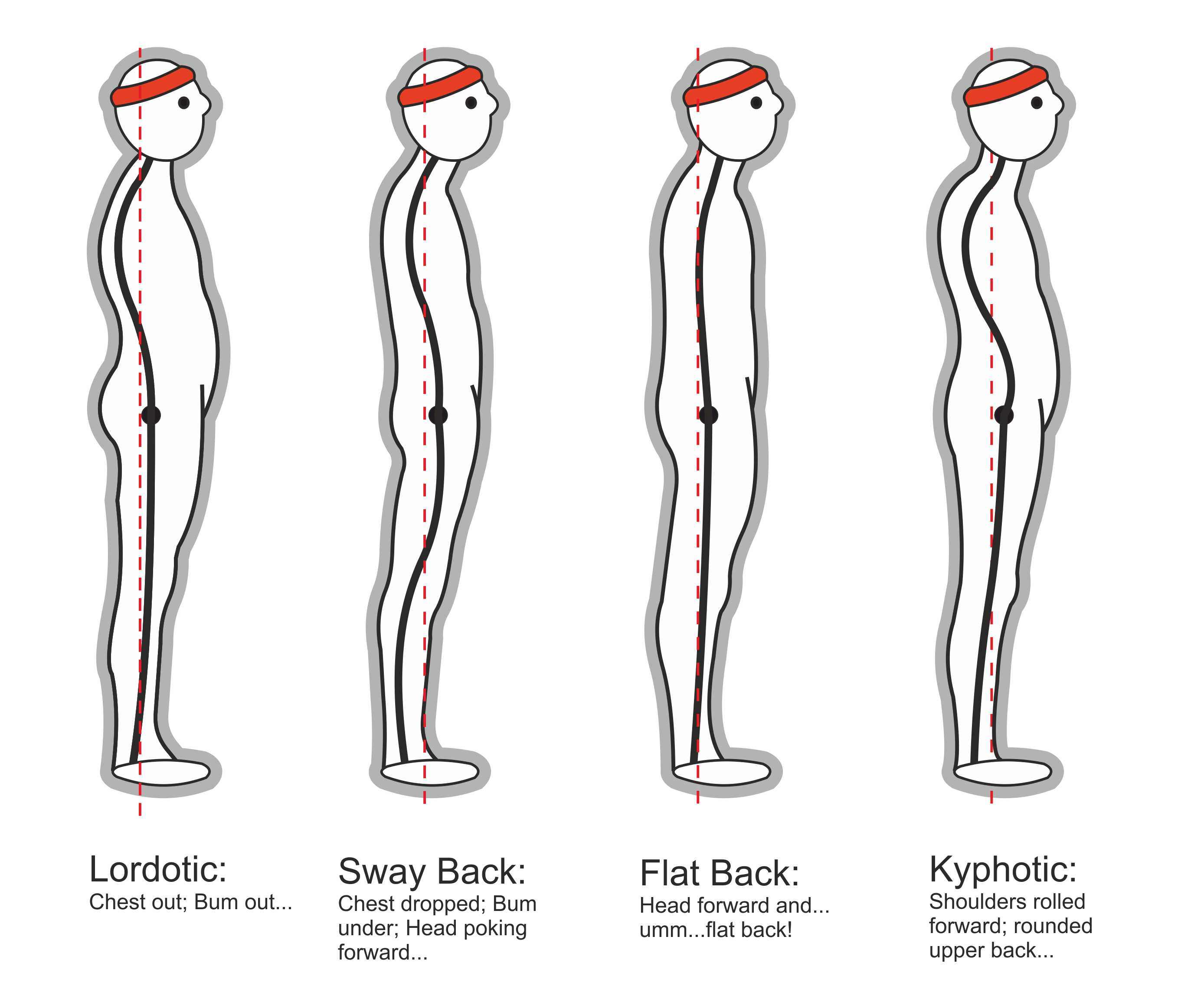
By this I mean checking the red dotted line, also known as the plumb line. This runs from the ear, through the shoulder, hip, knee and ankle, and if the posture is neutral the curves of the spine will produce this – ideally – vertical line…don’t worry this a fairly rare occurrence in a typical body! [I may look in to posture types and effects in more depth in a future post!]
If the lower back is an issue then it is very important to look at the function and condition of that area and how each muscle group and structure affects the other.
A lordotic posture, for example, not only creates tightness within the lumbar region of the back but also shortens and tightens the hip flexor group. It is even more stressed if the abdominals are too weak to support the tipped pelvis.
Other great exercises to help with this are the Pilates basics of Knee Floats whilst prone (lying on your back) to correct the position of your pelvis and also to engage your abdominals. Plus, exercises like the Pelvic Tilt or Bridge which encourage healthy controlled sequential movement of the spine are also ideal.
A few minutes a day set aside for a minimal stretching routine, or light abdominal work, will have a beneficial impact to your fluidity of movement, and will hopefully start to dissipate those aches, pains and niggles!
Keep smiling!
Heather

